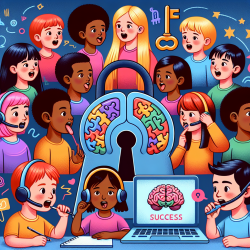Introduction
As a Special Education Director, it is crucial to stay informed about innovative strategies that can enhance the educational experience for students with diverse needs. A recent study titled "Sentence Context and Word-Picture Cued-Recall Paired-Associate Learning Procedure Boosts Recall in Normal and Mild Alzheimer's Disease Patients" offers valuable insights into improving memory recall, which can be particularly beneficial for students with cognitive impairments.
Understanding the Study
The research conducted by Iodice et al. (2018) explored the effectiveness of using combined pictorial illustrations and sentences as contextual cues to enhance word recall in healthy older adults (HOA) and individuals with mild Alzheimer's disease (AD). The study involved 36 participants, split equally between HOA and mild-AD groups. Participants were tasked with memorizing pairs of words under different conditions: word-word (WW), word-picture (WP), with and without sentence context.
Key Findings
The study found that both HOA and mild-AD participants showed improved recall when pictures were used alongside words, compared to words alone. Additionally, embedding these pairs in a sentence context further enhanced recall. The WP condition yielded a higher recall rate than the WW condition, and the presence of sentence context significantly improved recall performance across both groups.
Implications for Practitioners
These findings suggest that incorporating word-picture and sentence context strategies into educational practices can be highly beneficial for students with cognitive impairments. Here are some practical applications:
- Use of Visual Aids: Incorporate pictorial representations alongside verbal instructions to aid memory recall.
- Contextual Learning: Embed learning materials within meaningful sentence contexts to enhance understanding and retention.
- Interactive Learning: Encourage students to create their own word-picture associations and sentences to deepen their learning experience.
Encouraging Further Research
While the study provides promising results, further research is needed to explore the application of these strategies in different educational settings and with various age groups. Practitioners are encouraged to conduct their own investigations and share findings to contribute to the growing body of knowledge in this area.
Conclusion
Incorporating word-picture and sentence context strategies into educational practices offers a potential avenue for enhancing memory recall in students with cognitive impairments. By leveraging these techniques, educators can provide more effective support and improve learning outcomes for their students.
To read the original research paper, please follow this link: Sentence Context and Word-Picture Cued-Recall Paired-Associate Learning Procedure Boosts Recall in Normal and Mild Alzheimer's Disease Patients.










